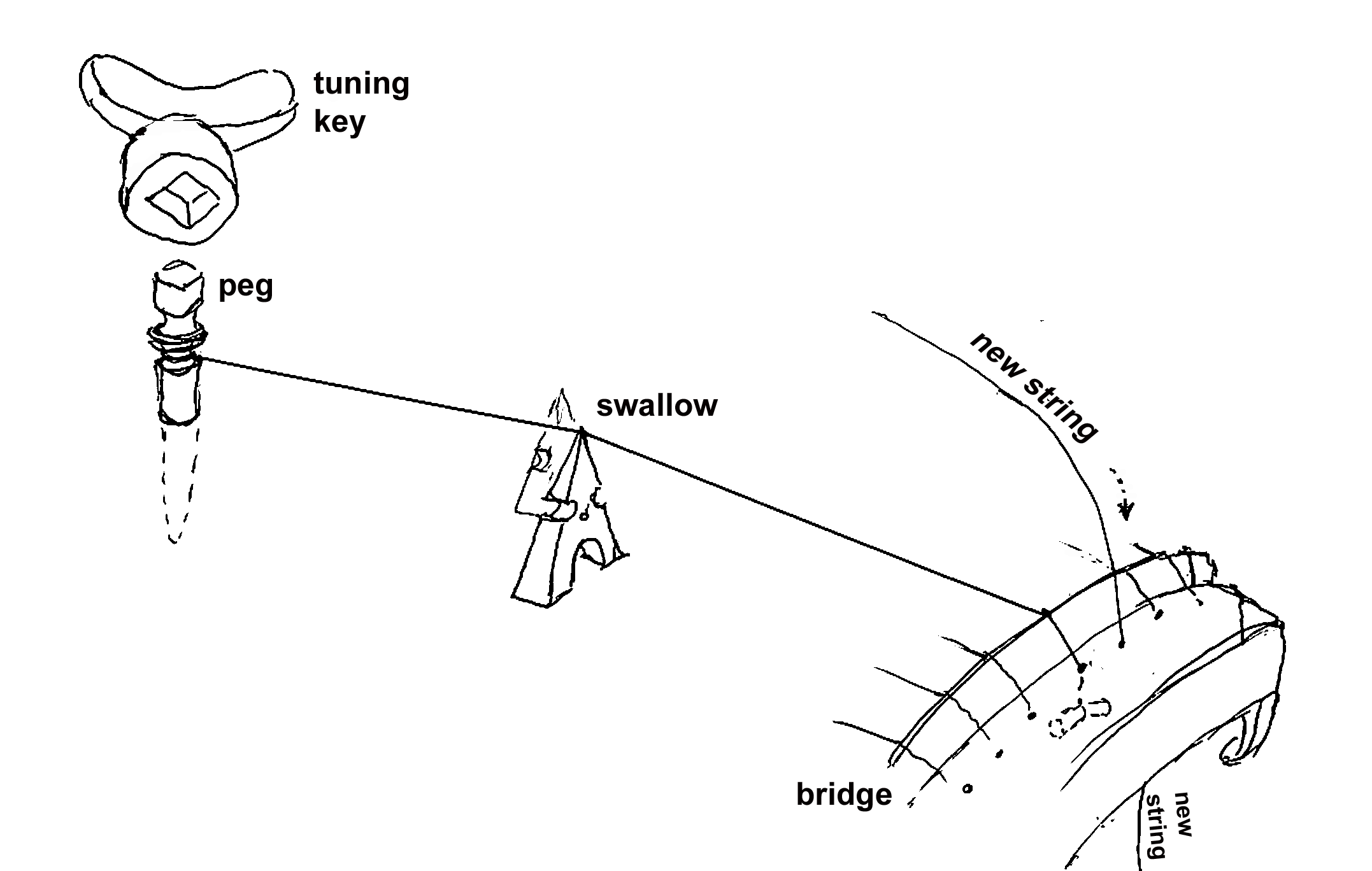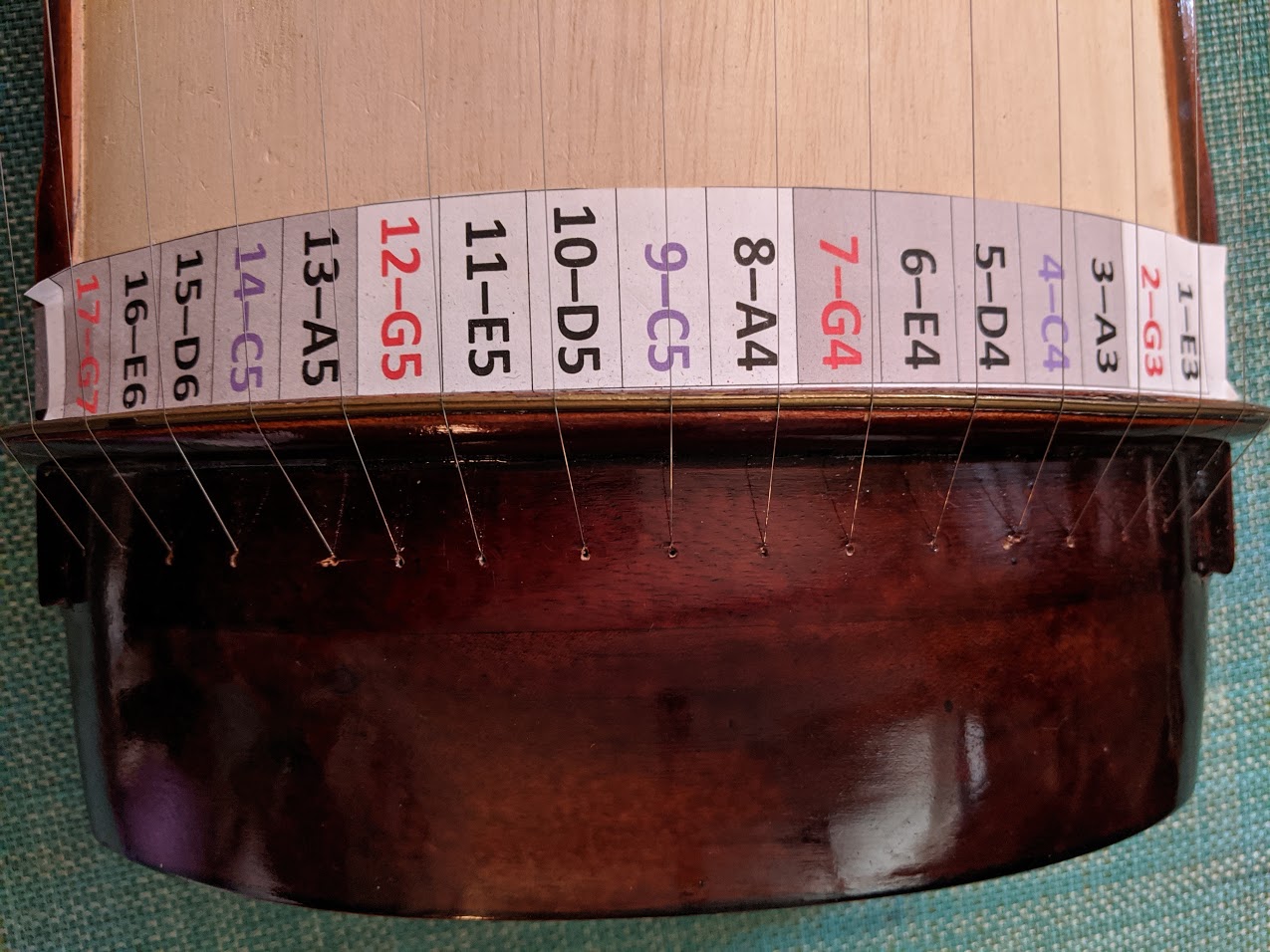Tuning is getting the string pitch, measured by a tuner (like Tuner Ninja), to match with the label on the bridge under each string (like "7-G4", read String #7, for pitch "G4").
- Get a tuner on your computer screen, or on your cell phone. Make it active (meaning, it responds to a sound you make on đàn tranh).
- Put your nails on.
- Look at the chart, which shows String #1 corresponds to “E3”, string #2 to “G3”, string #3 to “A3”, string #4 to “C4”, string #5 to “D4”, etc.
- Put the chromatic tuner right in front of the đàn tranh. Make sure it is active.
- Pluck the first string and you will see the tuner's needle moving, and one of the big letter A, B, C, D, E, F, G notes appears on-screen and a green pitch name shines. The first string should be “E3” (see above). Our goal is to see the pitch needle pointing squarely at “E3” on the tuner.
- If the needle does not point directly at “E3”, the string is not at its correct pitch. You can grab the swallow by the neck around the string, with your left hand thumb and index finger, and glide it (don't lift the two legs off the surface) slowly in the direction of the needle on your tuner.
- If there is no place to move the swallow further, put the tuning key squarely on top the string peg, with a little pressure, turn it counter-clockwise to make the pitch higher, or clockwise to lower the pitch.
- Repeat until you get the needle of chromatic tuner to pointing at “E3”.
- Try step 3 to 8 on the second string, and get the needle on the tuner pointing to “G3” (on the chromatic tuner).
- Continue with step 3 to 8 to the third string with “A3”, then to the fourth with “C4”, etc. until all 17 strings are correctly tuned according to the pitch chart above.
- Normally, tuning 17 strings of the Đàn tranh will take you about 5 minutes.
A 250 points question: why do we need to tune the đàn tranh?
|






